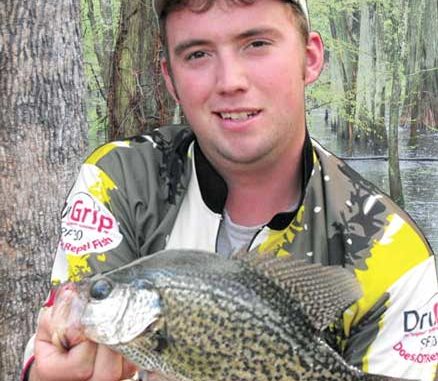
Shunning high-tech tackle, Whitey and Matthew Outlaw get back to the basics using a single pole and some unconventional tactics.
Fishermen are known to be opportunists. They’re always on the look out for something new, something to give them that edge to catch more and bigger fish.
Crappie fishermen are no different, and recent years have seen a boom in new methods and tactics for catching their favorite freshwater gamefish — using tactics borrowed from other species and involving high-dollar electronics, specially designed high-dollar boats, and more new tackle than you can shake a stick at.
Then, there is Whitey Outlaw.
Outlaw is a native of St. Mathews near the headwaters of the Lake Marion, which contains miles and miles of flooded wetlands crisscrossed with creeks and cypress trees encrusted with Spanish moss. The area is known locally as “Sparkleberry,” but it’s “the swamp” to Outlaw, who has earned quite a reputation as a formidable angler. Few people hold hope of bringing in a better stringer of slabs on Santee Cooper. From the railroad trestle at Rimini that is considered the gateway to Sparkleberry Swamp, Outlaw looks out across a landscape studded with cypress trees that he calls home.
“I grew up out there in the swamp,” Outlaw reminisced. “Few people realize this now, but back in the old days, fishing with my grandfather, we used to paddle out there in a flat bottom boat right into the grass and trees. He showed me how to rake out a hole in the grass and catch crappie out from under all that grass. He also showed me that some of the biggest slabs would dig down into the roots of those trees, and the only way to get ’em out was to stick a cane pole down in there and jig ’em out.”
Never forgetting his roots, Outlaw went on to become a seasoned tournament competitor, which landed him a spot as a pro-staff member for BnM Poles as well as host of the outdoor TV show “Crappie University” from 2001 to 2005. These days, Outlaw spends a majority of the spring fishing the Crappie Masters national tournament trail. On his rare off days, Outlaw heads back to the swamp when he wants to load up on fresh crappie filets or just to do some fun fishing.
“There are a lot of great places to fish at Santee,” he said, “but for me, there’s only one place that is guaranteed to produce a limit of big crappie on just about every trip, and that’s why I head back to the swamp.”
Outlaw says the key to locating prime habitat in a forest of trees is to look for channels, ditches, creeks, or just deep depressions in the bottom contour away from the main current. He said crappie will stay in these locations year-round, and that’s where he heads, even if he has to chip ice out in the winter to fish through the grass. In the early spring, these depressions will warm quickly, and he often finds crappie spawning as early as the first of March.
“I believe crappie will spawn just about everywhere across the state sometime in March,” said Outlaw. “I can’t tell you how many times I’ve caught crappie in two or three feet of water on different lakes while I was bundled up in a heavy coat and stocking cap.
“Don’t confuse air temperature with water temperature. When those crappie find 58- to 60-degree water, they’re going to start spawning, whether that’s on the north end of a muddy lake or in a shallow slough in the middle of the swamp.”
Another reason Outlaw holds the swamp so dear is that it’s rarely affected by bad weather, a common problem elsewhere during the month of March.
“Wind, rain, snow, even hot or cold weather doesn’t bother these fish because they’re insulated from all that by the grass and heavy cover,” said Outlaw. “The only thing that really bothers them is when we get a lot of rain and there’s a lot of muddy current washing through. Then, you might as well go someplace else, because you won’t catch them in here during a flood.”
According to Outlaw, deep-cover crappie don’t spook like most open-water species. To prove his point, he fishes those areas in a 15-foot, flat-bottom johnboat that he runs right up into the grass and trees with the outboard still running. Using a rake, he opens a hole in the grass and practices his version of “Southern ice fishing.” He said that without the hassle of a trolling motor or depth finder, he can fish more locations by not shutting off his outboard.
“The water in the swamp is usually less than four feet (deep), so I don’t need a depth finder,” he said. “The fish will be right under the grass or near the surface looking for food. I think running that outboard right up into the grass also gets their attention, because it dislodges all kinds of insects and baitfish that are also dug into the grass hiding from predators.”
Although Outlaw insists that spooking crappie with his boat isn’t a concern, he will often piggy-back a small, 1-man sneak boat into the swamp when fishing with his son, Matthew. Having two boats allows father and son to cover more water, and he admits that Matthew often catches better fish by getting even further back into holes and sloughs where the bigger boat can’t reach.
“This was my boat when I was a kid,” said college-aged Matthew Outlaw. “We have a pond near our house, and I spent many afternoons fishing out of this thing. It works great in thick cover, but it’s also hard to beat for fishing boats docks out on the big lake.”
Matthew Outlaw said the small boat has all the luxuries of a bigger boat but also allows him to maneuver using only the foot-controlled electric motor. That leaves his hands free to fish or hold the boat in position with a small sculling paddle.
“There are areas in the swamp where the drainage creeks are so shallow you can’t get an outboard in there, but the 1-man boat slides right through,” he said. “Not only that, but sometimes the bigger, spawning fish will be on nests that are only a foot deep, and I can ease up within a pole length using only the electric motor — which is positioned on the back of the sneak boat — and pick them off.”
The Outlaws submit that to the beginner, spots in Sparkleberry Swamp have a tendency to all look alike, but there are some areas that they prefer to fish. The first is Catfish Creek, near the railroad trestle between Packs Landing on the Rimini side of the lake and Low Falls Landing on the Lone Star side. Traveling northwest, Big and Little Otter Flats are approximately 6½ miles from the trestle. Riser’s Lake is west of Otter Flats and adjacent to the Santee River. Finally, just north and east of Riser’s is Broadwater Creek, which connects on its south end with the Congaree River.
“Dad and I know these places by heart, but if you find the right map, most of the better known sloughs and creeks are marked,” Matthew Outlaw said.
“All of them will hold crappie, but for a beginner, it’s a matter of trial and error,” said Whitey Outlaw. “As far as I know, there are no crappie guides who guide up in the swamp, so it’s just a matter of getting in there and finding them.”
Outlaw’s favorite bait in the swamp is a tube jig he rigs on a standard 1/16th-ounce jighead. He rarely uses live bait when jigging but offers that there are days that tipping a jig with a live minnow gets the job done more quickly. He fishes the jig on 10-pound Vicious fluorocarbon and uses a 10-foot jig pole he designed for BnM.
“I like a No. 4 hook, which is a little bit smaller than normal, on a 1/16th-ounce jighead,” he said.“Color is often a matter of personal preference, but I like a white or chartreuse jig when I’m fishing around dark-colored wood. On the other hand, I’ve seen crappie show a preference for black or dark-colored jigs when fishing through the grass. Either way, I want a color that entices a solid hit. If they’re just pecking at it, I’ll change colors until I find one that they just slam.”

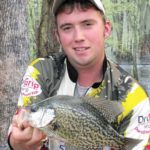
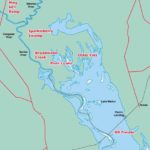
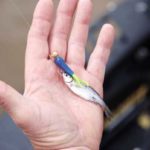
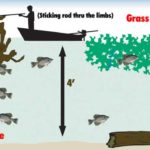
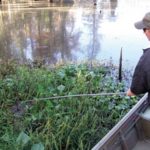
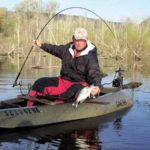
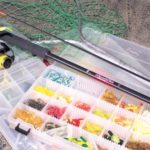



Be the first to comment